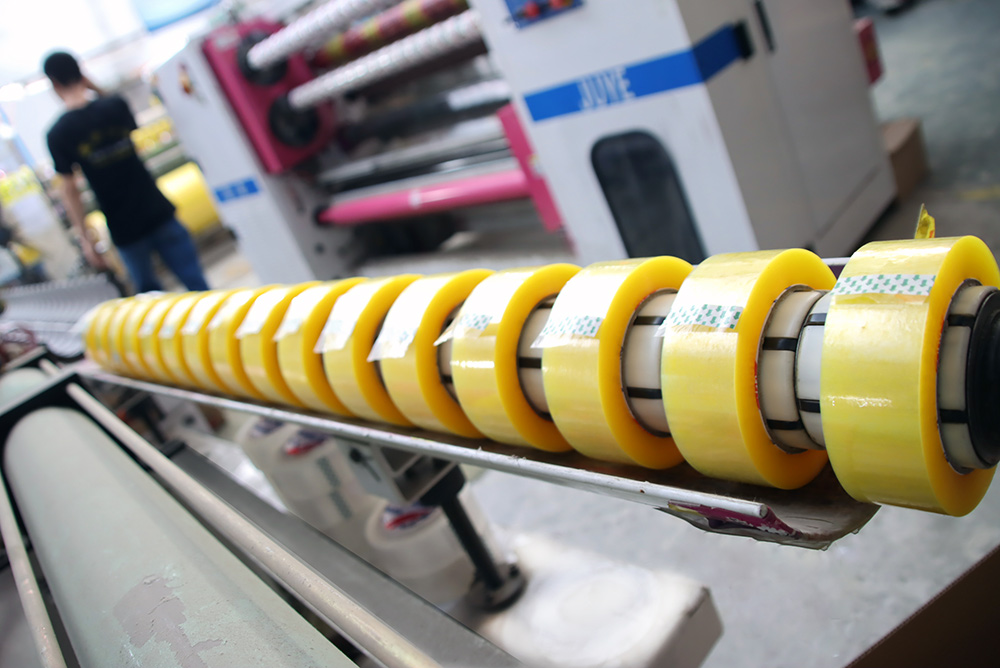Simply, BOPP tapes are nothing but polypropylene film coated with adhesive/ glue. BOPP stands for Biaxial Oriented Polypropylene. And, the rugged nature of this thermoplastic polymer makes it ideal for the packaging as well as the labeling industry. From carton boxes to gift wrapping and decorations, BOPP tapes have made their invincible mark in the packaging industry. Well, not only here, but BOPP tapes have prolific use in the fastest growing E-Commerce industries as well. We aren’t surprised. After all, from basic brown variants to colorful tapes and printed variants, you can play around with your packaging conveniently, with BOPP tapes.
Now, aren’t you curious to how these heavily used tapes are manufactured? Let me walk you through the manufacturing process of BOPP tapes.

1. Creation of an uninterrupted feed.
Rolls of Polypropylene plastic film are loaded to a machine called unwinder. Here, a strip of adhesive splicing tape is positioned along the end of each roll. This is done in order to connect one roll after another. In this way an uninterrupted feed is created to the production line.
Polypropylene is used over other materials as it is resistant to high temperatures and solvents. Moreover, it assures smooth and uniform thickness. Hence, ensuring the durable and exceptional quality of BOPP tapes in the end.
2. Converting BOPP films into BOPP tapes.
Before we proceed, hot melt is mainly composed of synthetic rubber. Rubber forms a quick strong bond on the various surface and this gives BOPP tapes the tensile strength it claims. Additionally, a hot melt also contains UV protectors and Antioxidants to prevent drying, discoloring, and aging of adhesive.
After maintaining the melt at a specific temperature, hot melt is pumped into a machine called gluer. Here, the excessive fragments are wiped off before rolling it over the film. A cooling roller would ensure the hardening of adhesive and a computerized sensor would ensure an even coat of adhesive on the BOPP film.
3. Rewinding the process.
Once the glue is applied to the side of the BOPP tape, the BOPP roles are rolled onto spools. Here, the knife separates the tape at the splice point. The splice point is where the rolls are connected in the initial stage. Further, slitters divide these spool roles into the desired widths and the ends are sealed with a tab.
Finally, the machine ejects the finished tape rolls in a ready-to-use form. The variant of BOPP tape, colored, transparent, or printed, undergoes a process while the adhesive is being coated to the film. Now, wouldn’t you agree that despite being the most overlooked material, packaging tape is crucial to the packaging process?

Post time: Jun-10-2022
